

| Circe
| Wednesday, October 7, 2009 I started the day with the port settee top. From a sheet of 12mm Meranti plywood, I cut a piece to the correct length and then, after a test-fit, cut a rough approximation of the curvature of the hull on the outboard edge to allow me to insert the piece far enough to accurately scribe the true contours, after which I made the final cut. With the outboard edge fitted, I marked the overhang on the inboard edge and cut the piece to its final size. Installation would come later, once some additional steps in the area beneath had been completed, but in the interim I'd have a flat surface on which to place tools and equipment out of the way. |
|
The settee required additional support in the center of its wide span to prevent deflection, so I built a small bulkhead to provide the needed support, as well as to divide the locker space beneath the settee into two separate compartments. I made a cardboard template that I then transferred to more of the 12mm Meranti; I left the top edge overlong so that I could transfer an accurate level mark off the settee front in order to trim the piece to the proper height. |
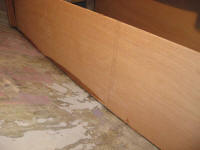
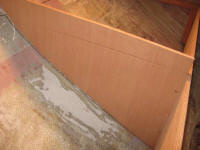 |
|
With the cutting and fitting thusly completed, I permanently installed the mini-bulkhead with thickened epoxy adhesive and a wooden cleat and screws at the inside edge of the settee front. I added epoxy fillets along the edges where the bulkhead met the hull, and similarly applied fillets to the inside edges of the settee front and new galley bulkhead in preparation for tabbing later in the day. |
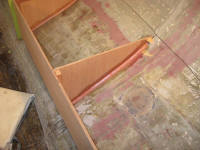
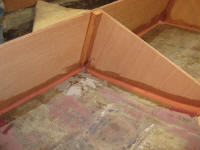
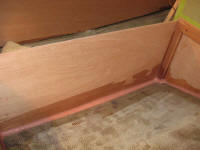
|
|
In the same operation, I applied fillets to the new port aft bulkhead, and the aft side of the forward galley bulkhead as well. I left the starboard side for later, in order to spread out the tabbing operations and because I still needed to cut and fit support bulkheads on that side. |
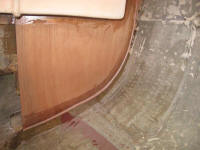
 |
|
After allowing the new fillets to conveniently semi-cure during lunch, I spent the first part of the afternoon installing biaxial tabbing on the port side, covering all the fillets and securing all the new interior structure. I used a single layer of 6" tabbing on the inside edges, and a layer of 4" tabbing on the exterior seam between the settee front and the hull. |
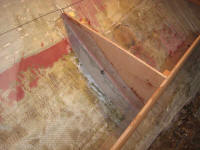
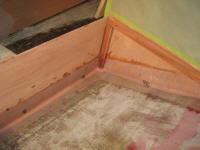
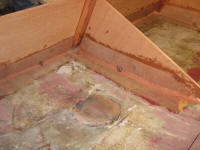 
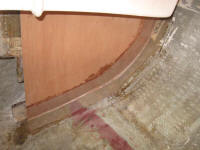
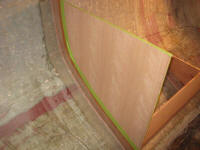 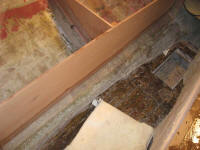 |
|
With the work on the port side complete for now, I moved to the starboard side to begin a similar process. I temporarily installed a horizontal support cleat at the aft end of the settee, on the starboard aft bulkhead; final installation would occur only after I completed the bulkhead tabbing, so I used drywall screws to simply hold the cleat in place for the moment. Then, I cut one section of the settee top roughly to size, using a scrap of plywood that I'd brought into the boat earlier to use as a wet-out table and which happened to be a good size for the two-section starboard settee. I left final fitting till later, but with the piece generally cut to size, I could lay out the first of at least two divider/support bulkheads that would be required on this side. The first bulkhead would provide the support for the seam between the plywood top sections, so I located it at the edge of the first sheet. Using the same techniques as on the port side, I cut and fit the bulkhead, marked the top level with the settee front, and installed it permanently with epoxy adhesive and fillets. This brought me to the end of the day. |
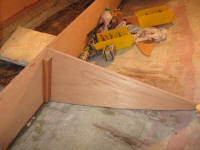
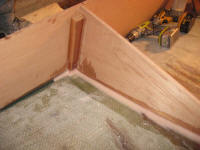
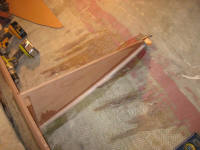 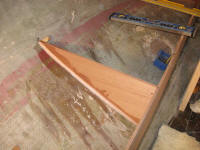 |
|